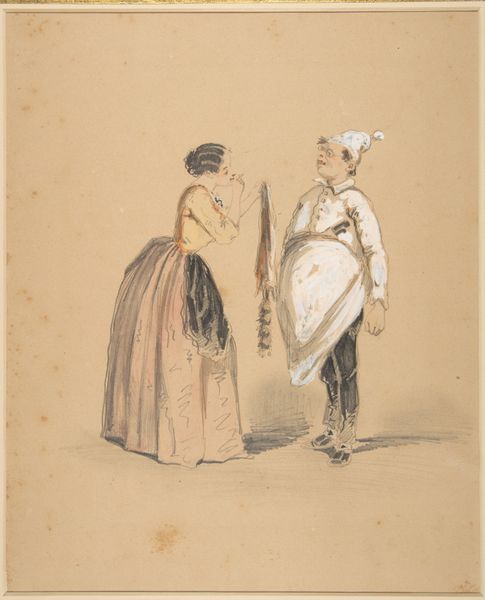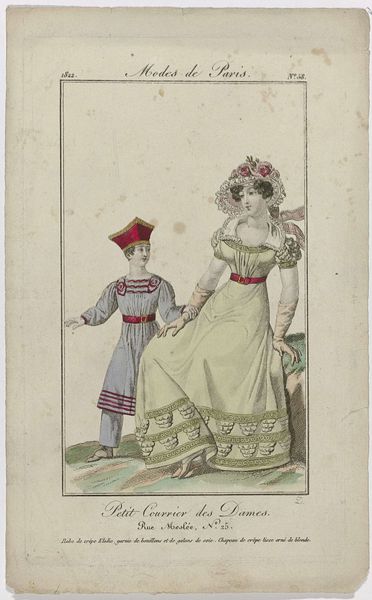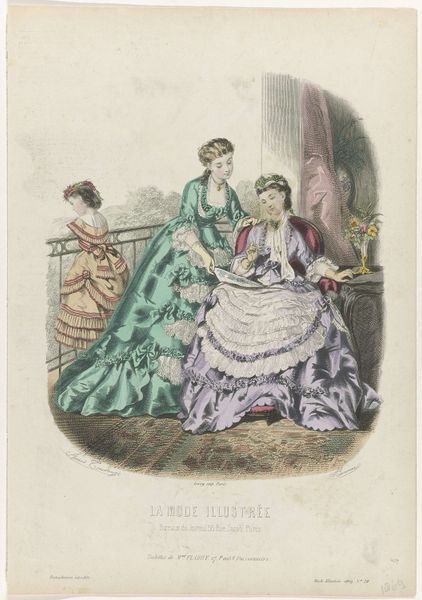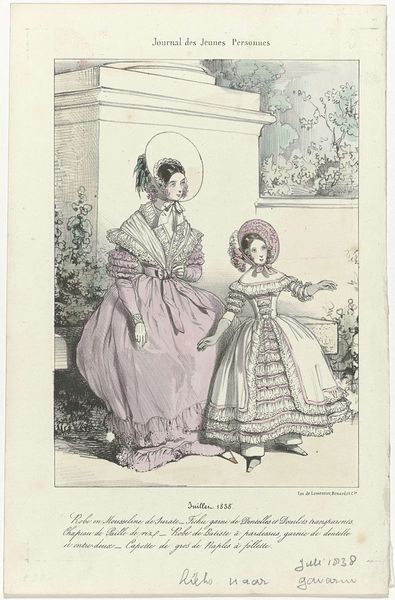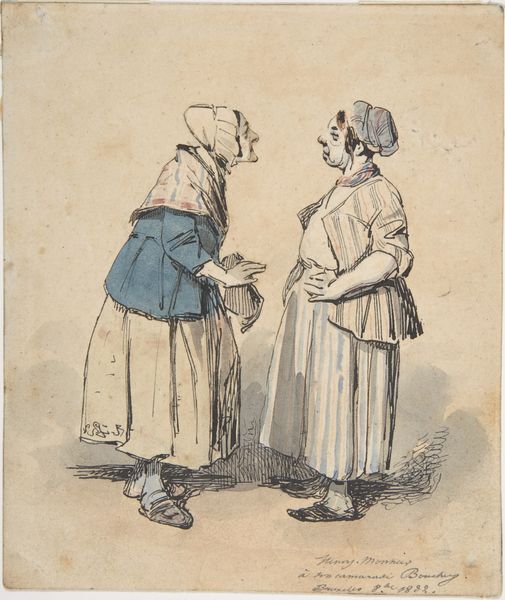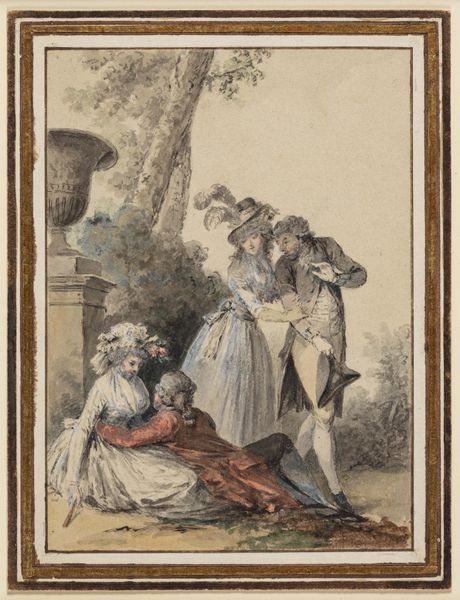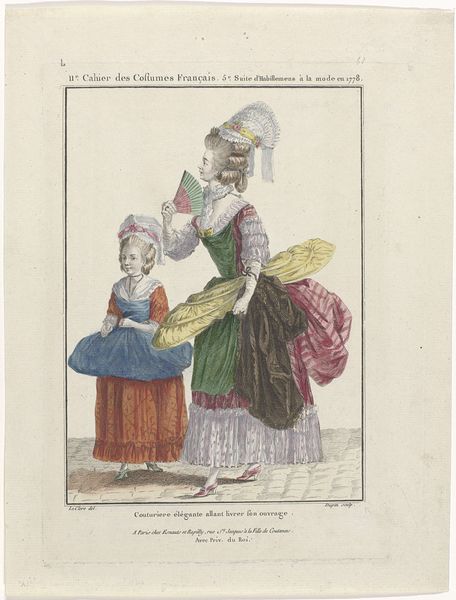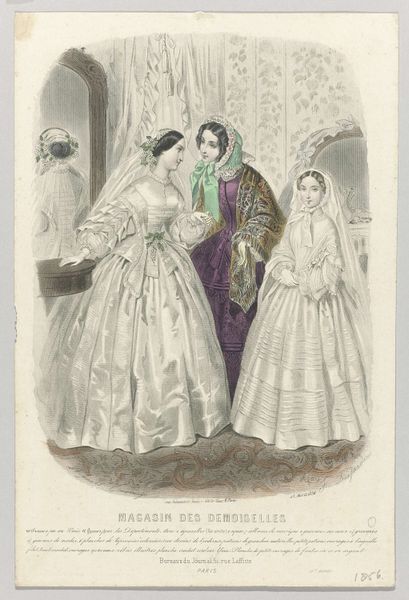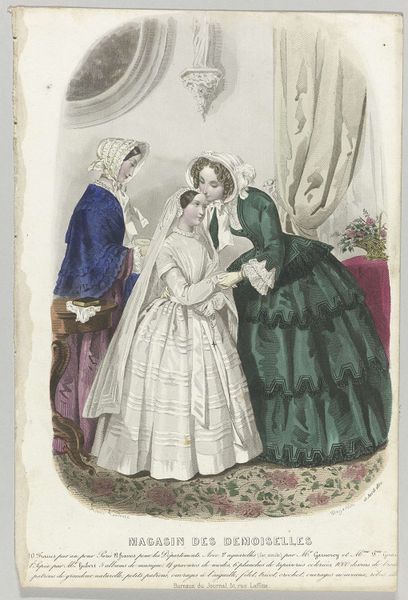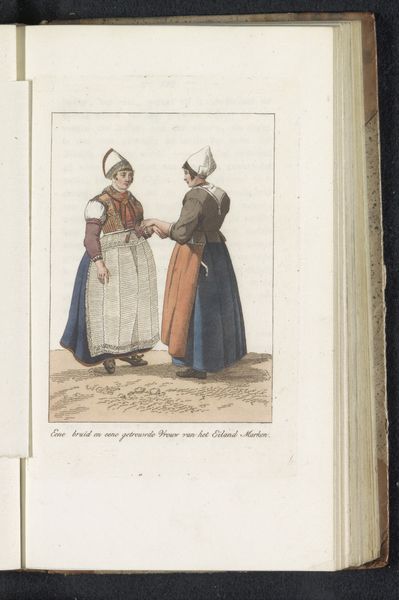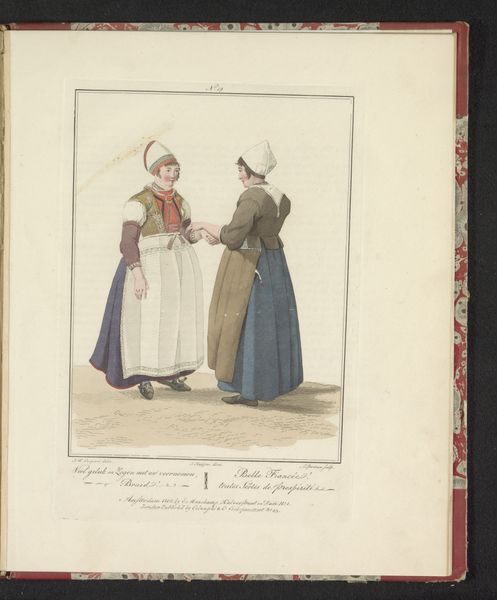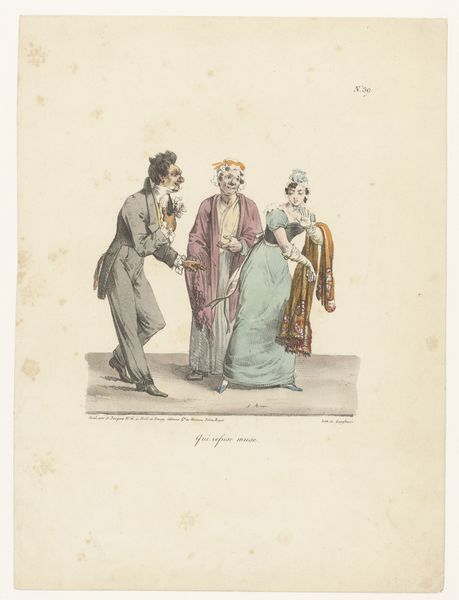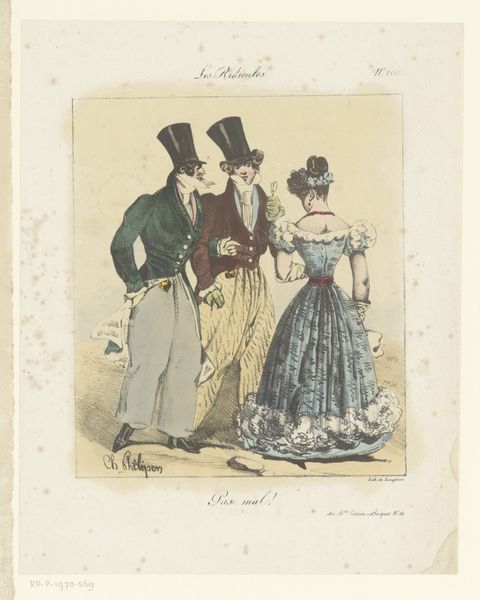
Fashion Drawing with a Woman Seated in a Chair with a Boy and Girl 19th century
0:00
0:00
drawing, coloured-pencil, print, watercolor
#
portrait
#
drawing
#
coloured-pencil
#
girl
# print
#
boy
#
figuration
#
watercolor
#
coloured pencil
#
romanticism
#
watercolour illustration
#
genre-painting
#
watercolor
Dimensions: 6 5/8 x 5 1/4 in. (16.8 x 13.3 cm)
Copyright: Public Domain
Editor: We’re looking at “Fashion Drawing with a Woman Seated in a Chair with a Boy and Girl,” a 19th-century watercolor, colored pencil, and print by Pierre-Numa Bassaget. It feels quite staged, almost like a photograph, but also idealized. What do you see in this piece, considered in its historical context? Curator: The work functions almost like a document of its time. Notice how meticulously the clothing is rendered. It speaks to the emerging fashion industry and its growing influence. These kinds of illustrations circulated in print, informing public tastes and dictating styles. What strikes you about the woman's pose? Editor: She appears almost passive, reclining elegantly while the children stand. Is she meant to represent a particular societal ideal? Curator: Precisely. The posture and clothing suggest a woman of leisure, a key figure in the construction of 19th-century bourgeois identity. The carefully arranged children further emphasize a controlled image of domestic harmony, perhaps more aspiration than reality. It makes you wonder about the real lives and pressures faced by families during that era. Editor: That’s fascinating. I hadn't considered it as social commentary, more like a window into aspiration and consumerism of the time. Curator: Indeed. Visual culture actively shapes social desires. Did fashion of the time carry different class-based or geographical meanings? Editor: It definitely served as a display of wealth. This suggests it also could become exclusionary across geographical boundaries. Thinking about how artwork documents those aspects and serves aspirational purposes really broadens its interpretation. Curator: It does. It prompts one to think about visual presentation and self-presentation, and how societal values and pressures intertwine.
Comments
No comments
Be the first to comment and join the conversation on the ultimate creative platform.
